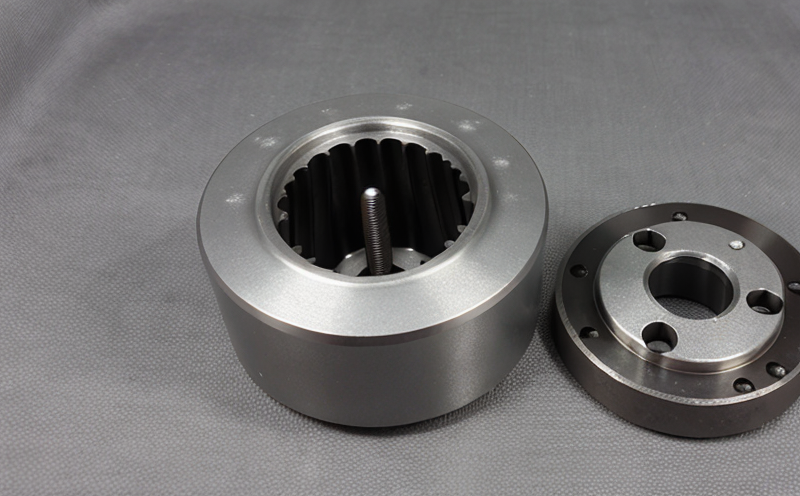ISO 4491-3 Carbon Content of Metal Powders
The ISO 4491-3 standard provides a detailed procedure for determining the carbon content in metal powders. This is crucial in various sectors including metallurgy and material science, especially where precision is paramount. The process ensures that metal powders used in powder metallurgy (PM) and additive manufacturing (AM) meet specific quality standards.
The test involves precise measurement techniques to ensure accurate results. Samples are prepared by homogenizing the powder before conducting the analysis. The carbon content is measured using sophisticated equipment such as combustion analyzers or infrared spectrometers, which provide reliable data based on internationally recognized methods.
Understanding the carbon content in metal powders is essential for several reasons:
- To ensure consistent quality and performance of final products
- To avoid defects during manufacturing processes like sintering
- To meet regulatory requirements imposed by industry standards
- To optimize material properties for specific applications.
The ISO 4491-3 standard is widely accepted in industries that rely heavily on metal powders. Compliance with this standard guarantees the highest quality control and enhances trust among stakeholders. This service ensures that your powder metallurgy or additive manufacturing materials meet stringent international standards, thereby ensuring product reliability and performance.
| Sample Preparation | Instrumentation Used | Testing Methodology |
|---|---|---|
| Homogenization of the powder sample | Combustion analyzer or infrared spectrometer | Combustion analysis followed by measurement of evolved gases |
| Industry Applications | Precision and Accuracy |
|---|---|
In powder metallurgy, the carbon content affects sintering behavior. |
The standard ensures ±1% accuracy in measuring carbon content. |
For additive manufacturing, precise carbon content is critical for layer-by-layer processing. |
The ISO 4491-3 method allows for repeatable and reproducible results. |
In summary, the ISO 4491-3 standard plays a vital role in ensuring that metal powders used in powder metallurgy and additive manufacturing meet the highest quality standards. By adhering to this standard, manufacturers can produce reliable products that comply with international regulations and market demands.
Benefits
Adhering to ISO 4491-3 offers numerous benefits:
Enhanced product reliability through precise carbon content measurement.
Reduction in manufacturing defects, such as porosity and shrinkage.
Avoidance of non-compliance with industry standards and regulations.
Improved customer satisfaction and trust due to consistent product quality.
By incorporating this service into your manufacturing processes, you can ensure that your products meet the highest international standards. This not only enhances your reputation but also opens up new market opportunities in sectors that demand stringent quality control.
Industry Applications
The ISO 4491-3 standard is particularly relevant for industries where precision and reliability are critical:
Powder metallurgy, especially in the production of gears, bearings, and other components that require high strength-to-weight ratios.
Additive manufacturing, which relies on precise metal powder composition to ensure successful layer-by-layer construction.
In both sectors, ensuring accurate carbon content is essential for achieving optimal performance and longevity of the final products. This service supports industries ranging from automotive and aerospace to medical devices, where precision in material science is paramount.
| Industry Sector | Precision Required |
|---|---|
Aerospace |
±1% accuracy ensures consistent performance and safety. |
Automotive |
Compliance with ISO standards enhances product reliability. |
In these sectors, the ability to accurately measure carbon content in metal powders is crucial for ensuring that products meet stringent quality and safety requirements. This service supports your efforts to maintain these high standards across various applications.
International Acceptance and Recognition
The ISO 4491-3 standard is widely recognized and accepted by industries around the world:
It is an internationally recognized method for measuring carbon content in metal powders.
The standard is used by leading manufacturers in powder metallurgy and additive manufacturing to ensure product quality.
By adhering to this standard, you can demonstrate your commitment to maintaining the highest levels of quality control. This enhances trust with customers and regulatory bodies worldwide, ensuring that your products meet international standards and are accepted in global markets.





